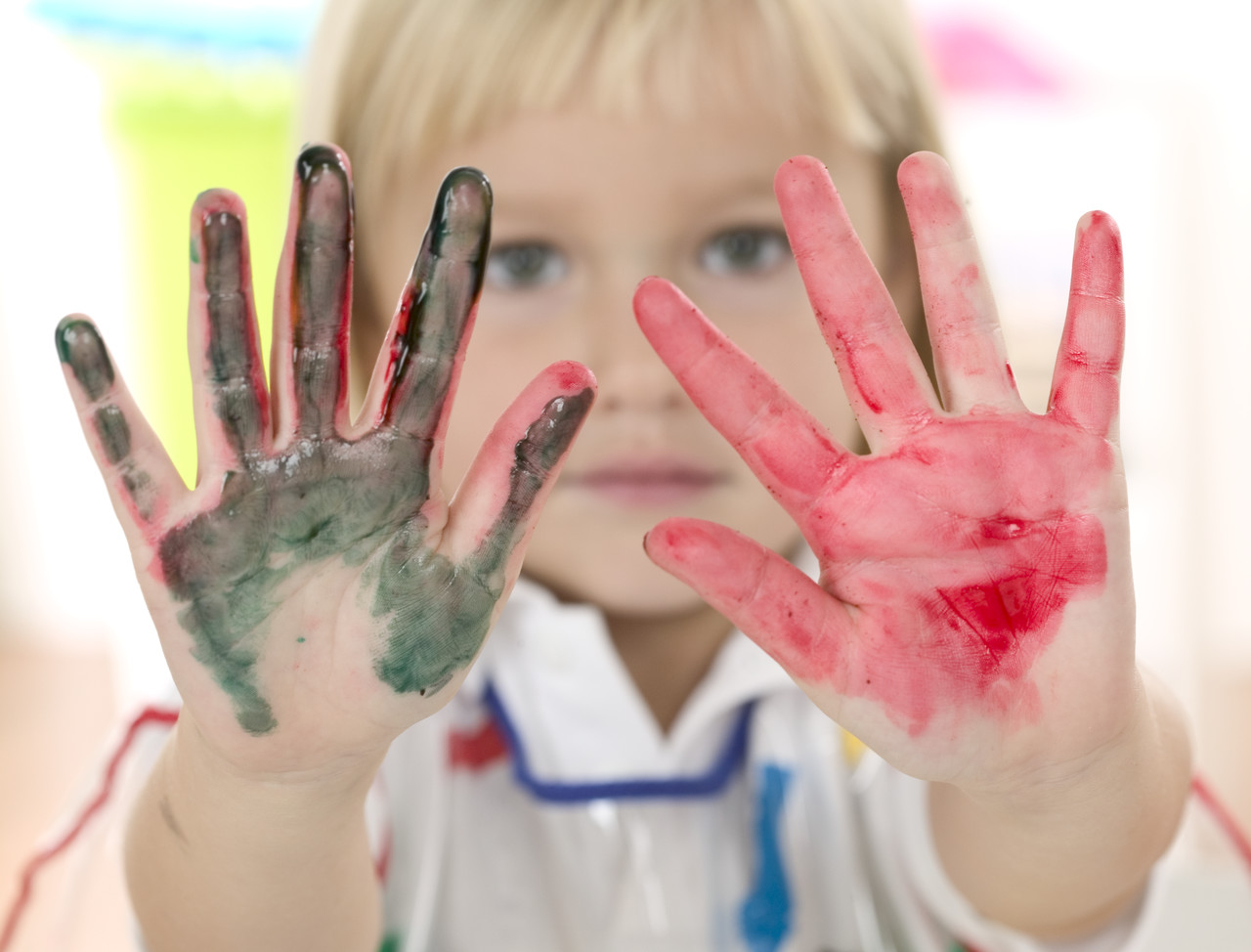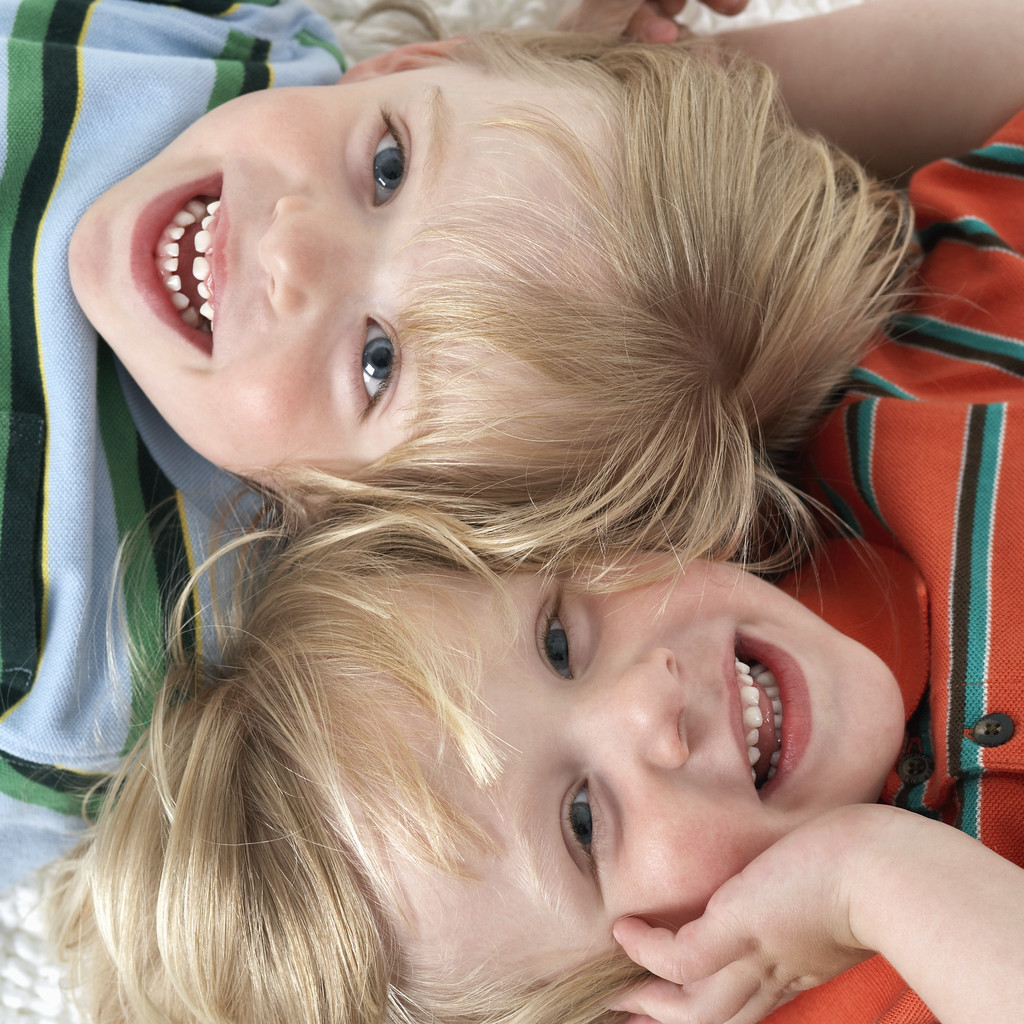Being a friend is a difficult concept for children to understand. Appreciating each others strengths is often equally hard. Tiny and Hercules by Amy Schwartz is a collection of very short stories about two friends, a mouse and an elephant. The fact that they are so different works out for the best, as they use their differing abilities to help each other.
After reading the story have the children relate times when they helped a friend. See if they can create a group story about friends. Over the next few days observe as they children play and photo or report to them times when you saw friends working together. A visual reminder of how to play together is a great reinforcing positive interactions.
It is also worthwhile for each child to see that he or she has something to contribute to a friendship. Help children to value what they can do and then they may be able to better value another child's contribution. Take time to praise specific actions. Children need to hear exactly what action you are pointing out. Say, "I liked that you passed the box to Bill. That way you can both have fun with the toys." This tells what you are acknowledging and why. Later point out how Bill helps his friend. Children who learn early in life to work together will have a much better chance for success and happiness.

Tuesday, June 16, 2009
Empowerment
It is never to early to help children understand that they can make a difference and to stand up for what they feel is important. Ballyhoo Bay by Judy Sierra and illustrated by Derek Anderson is just the book to plant that seed into the minds of children. The story is told in rhyme and has lots of fun pictures for children to examine. It starts out with Mira Bella planning a special art event at the beach. But just before the big day, signs go up announcing the beach is to be developed with parking lots and penthouses. Mira Bella and her friends don't let this setback stop them. They attend a meeting and convince the town council to keep the beach as it is. This may sound like a hefty topic for young children, but the author keeps the text simple enough to be understood my most preschoolers.
This would be a great book to read when the children discover a problem in their environment. Maybe the lunch area is too crowded, or there is too much trash on the playground, or they need a crosswalk in front of the school. Whatever the problem, help the children advocate for a change. If the children don't have a problem tell them about an issue that is important to children such as cutbacks in preschool or library funding and go from there. Our local library has coloring sheets for children to color and mail to local legislators. The coloring sheets advocate library funding. You could help the children make a DVD or write stories about the issue.
Even if you don't have a cause, I like the book because children can see that sometimes even the best plans don't work out, there are disappointments, and you have to figure out a new plan rather than give up.
This would be a great book to read when the children discover a problem in their environment. Maybe the lunch area is too crowded, or there is too much trash on the playground, or they need a crosswalk in front of the school. Whatever the problem, help the children advocate for a change. If the children don't have a problem tell them about an issue that is important to children such as cutbacks in preschool or library funding and go from there. Our local library has coloring sheets for children to color and mail to local legislators. The coloring sheets advocate library funding. You could help the children make a DVD or write stories about the issue.
Even if you don't have a cause, I like the book because children can see that sometimes even the best plans don't work out, there are disappointments, and you have to figure out a new plan rather than give up.
Monday, June 8, 2009
Family Vacation
Take time to read The Bunnies' Trip (2008) by Lezlie Evans and illustrated by Kay Chorao and it might just save a headache or two as the family starts out on a trip. My son should have read it to my grandson before he sent him off to pack for a visit a grandmas. While the children in this story packed a garden hose, horn, and weights, in his suitcase was a mismatched set of pjs, a large green elephant, and an assortment of other small items. Forgotten were the glasses, toothbrush, underwear, flip flops, swim trunks, and shirts. As anyone who has traveled with children might suspect, the children in this story also complain of being tired and annoy each other.
We all do better when we know what to expect. Taking time to discuss the important things to pack, things to do and to keep us comfortable while traveling, and what to expect when arriving at the destination will pay off for both the children and adults. If you are teaching in a preschool environment, help the children prepare lists of things you might take on a trip. Not only will it help children fell more comfortable, list making is a good cognitive skill that helps children with organization and categorizing.
There is usually a lot of excitement about a family trip, parents need to take time to check in with how the children are feeling about the trip. Do they have any apprehensions? Do they have what they need to sleep comfortably in a new environment? Do they know what they can do if they become scared when meeting unfamiliar people? Children who have a chance to prepare for any new experience will be most likely have more positive behaviors.
Wherever you go this summer, have a wonderful trip!
We all do better when we know what to expect. Taking time to discuss the important things to pack, things to do and to keep us comfortable while traveling, and what to expect when arriving at the destination will pay off for both the children and adults. If you are teaching in a preschool environment, help the children prepare lists of things you might take on a trip. Not only will it help children fell more comfortable, list making is a good cognitive skill that helps children with organization and categorizing.
There is usually a lot of excitement about a family trip, parents need to take time to check in with how the children are feeling about the trip. Do they have any apprehensions? Do they have what they need to sleep comfortably in a new environment? Do they know what they can do if they become scared when meeting unfamiliar people? Children who have a chance to prepare for any new experience will be most likely have more positive behaviors.
Wherever you go this summer, have a wonderful trip!
Friday, June 5, 2009
Be a Good Citizen
Part of having good social-emotional skills is being a good citizen. It builds self esteem and confidence to know you are doing your part for the good of the community. One of the simplest, but most concrete things children can do is to help with recycling and generally take care of the environment. There are two news books will help you teach the children in your lives how they can help "save the world."
The first book is George Saves the World by Lunchtime. It is by Jo Readman and Ley Honor Roberts. The book is in storybook format, but also included some informational inserts. Michael Recycle, by Ellie Bethel and illustrated by Alexandra Colombo is a written in rhyme and is not quite as wordy. Use them both together and the children should be enthusiastic about recycling! Make sure to give them some practical hands on activities to so they can see they do have the ability to help. Better yet them them brainstorm and come up with things they would like to do. Get families involved and you might just feel that together you making a difference in your community.
The first book is George Saves the World by Lunchtime. It is by Jo Readman and Ley Honor Roberts. The book is in storybook format, but also included some informational inserts. Michael Recycle, by Ellie Bethel and illustrated by Alexandra Colombo is a written in rhyme and is not quite as wordy. Use them both together and the children should be enthusiastic about recycling! Make sure to give them some practical hands on activities to so they can see they do have the ability to help. Better yet them them brainstorm and come up with things they would like to do. Get families involved and you might just feel that together you making a difference in your community.
Subscribe to:
Comments (Atom)

